In the latest instalment of Share Your Story you can read about how Emma Dargin, an Aboriginal Health Practitioner (AHP) at Condobolin's Aboriginal Health Service helped to save the sight of a patient with diabetic eye disease using her skills in retinal photography triaging and primary care eye health, during recent COVID-19 restrictions.
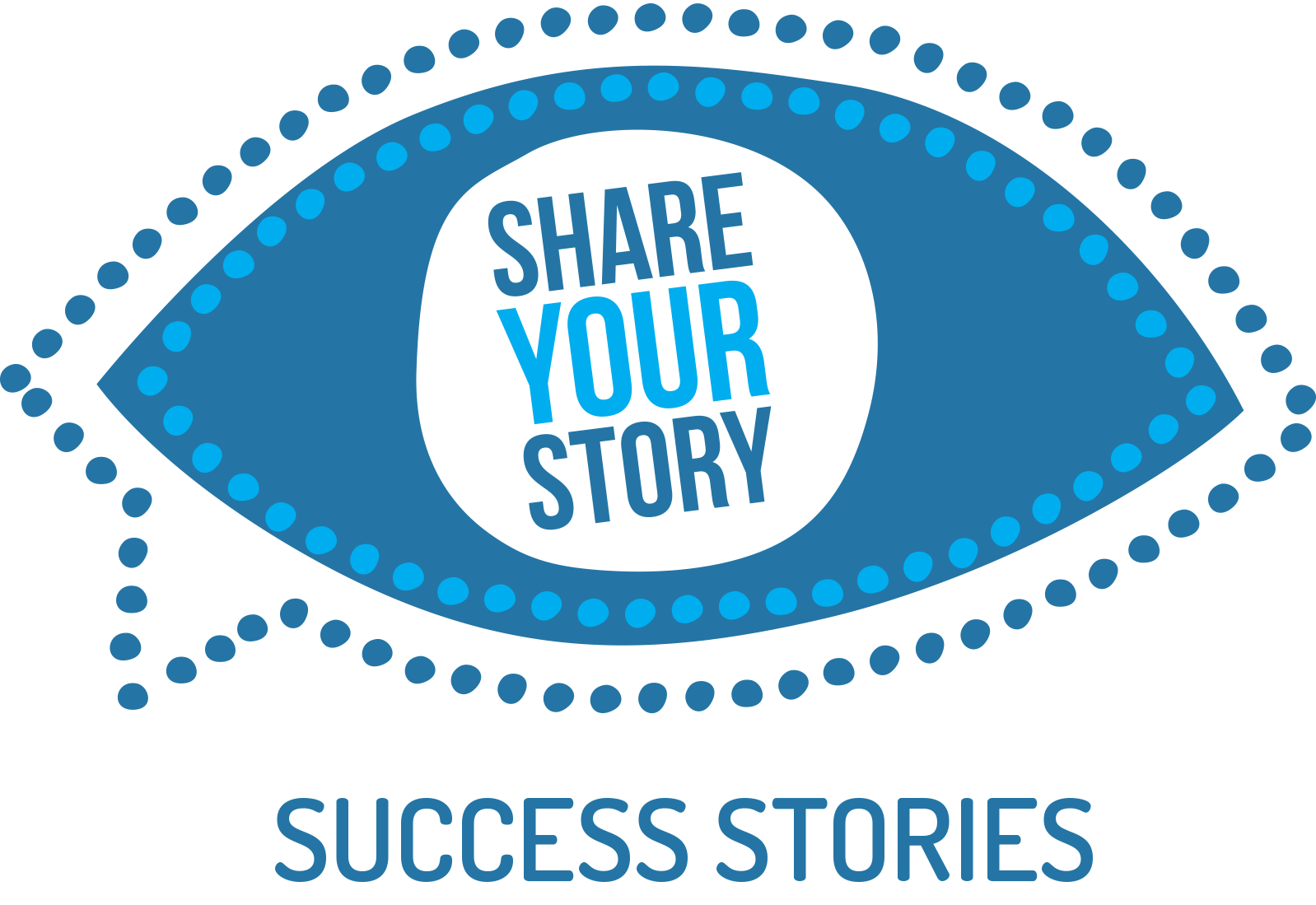
Emma Dargin, Elizabeth Barrett, Jane Hager, Dian Rahardjo and Colina Waddell all contributed to this instalment of 'Share Your Story: Success Story'.
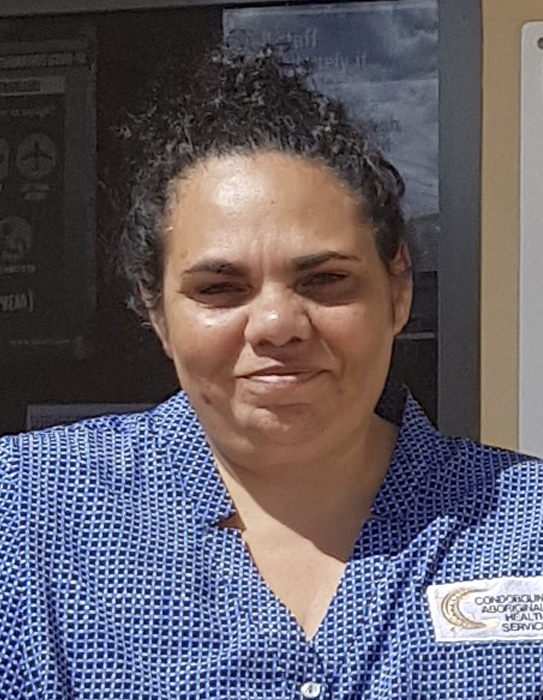
Emma Dargin an Aboriginal Health Practitioner (AHP), at Condobolin's Aboriginal Health Service helped to save the sight of a patient with diabetic eye disease using her skills in retinal photography triaging and primary care eye health, during recent COVID-19 restrictions.
Condobolin Aboriginal Health Service (AHS) is 460 km (6.5 hours drive) north-west of Sydney in outer regional New South Wales. Condobolin has a population of approximately 3,500 people, with about 770 residents identifying as Aboriginal and/or Torres Strait Islander. COVID-19 restrictions resulted in a period of two months without optometry outreach clinics at most regional and remote NSW ACCHSs - including Condobolin AHS.
A new patient, with Type 2 diabetes, presented to Condobolin AHS in April 2020. The patient had a history of uncontrolled blood sugar levels over the eight years since the diagnosis of diabetes and had not had an eye examination in five years. The patient complained about seeing black lines with both eyes. Emma took photos of the back of the patient's eye using a digital retinal camera.
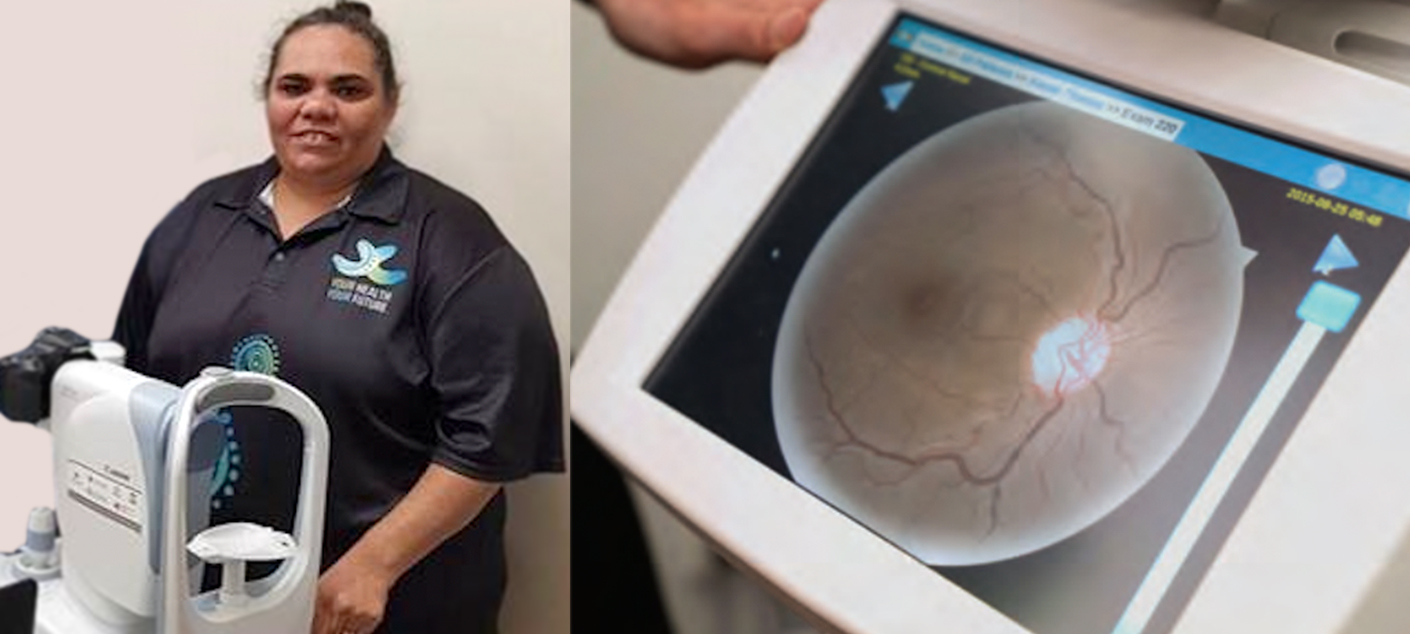
Image: (left) Emma with a retinal camera used at the Condobolin Aboriginal Health Service, (right) an example of a retinal photo.
The photos showed significant internal haemorrhaging in both eyes. Diabetic eye disease (diabetic retinopathy) is a leading cause of blindness in adults. It damages the blood vessels of the retina (light-sensitive tissue). Emma recognised that an urgent referral might be needed and flagged the images for priority review by Condobolin AHS's General Practitioner. The images were also assessed via telehealth by Condobolin AHS's Visiting Optometry Service Provider, Brien Holden Foundation, based in Sydney, and the Centre for Eye Health Retinal Photo Grading Service. All these practitioners recommended urgent assessment and treatment by an ophthalmologist.
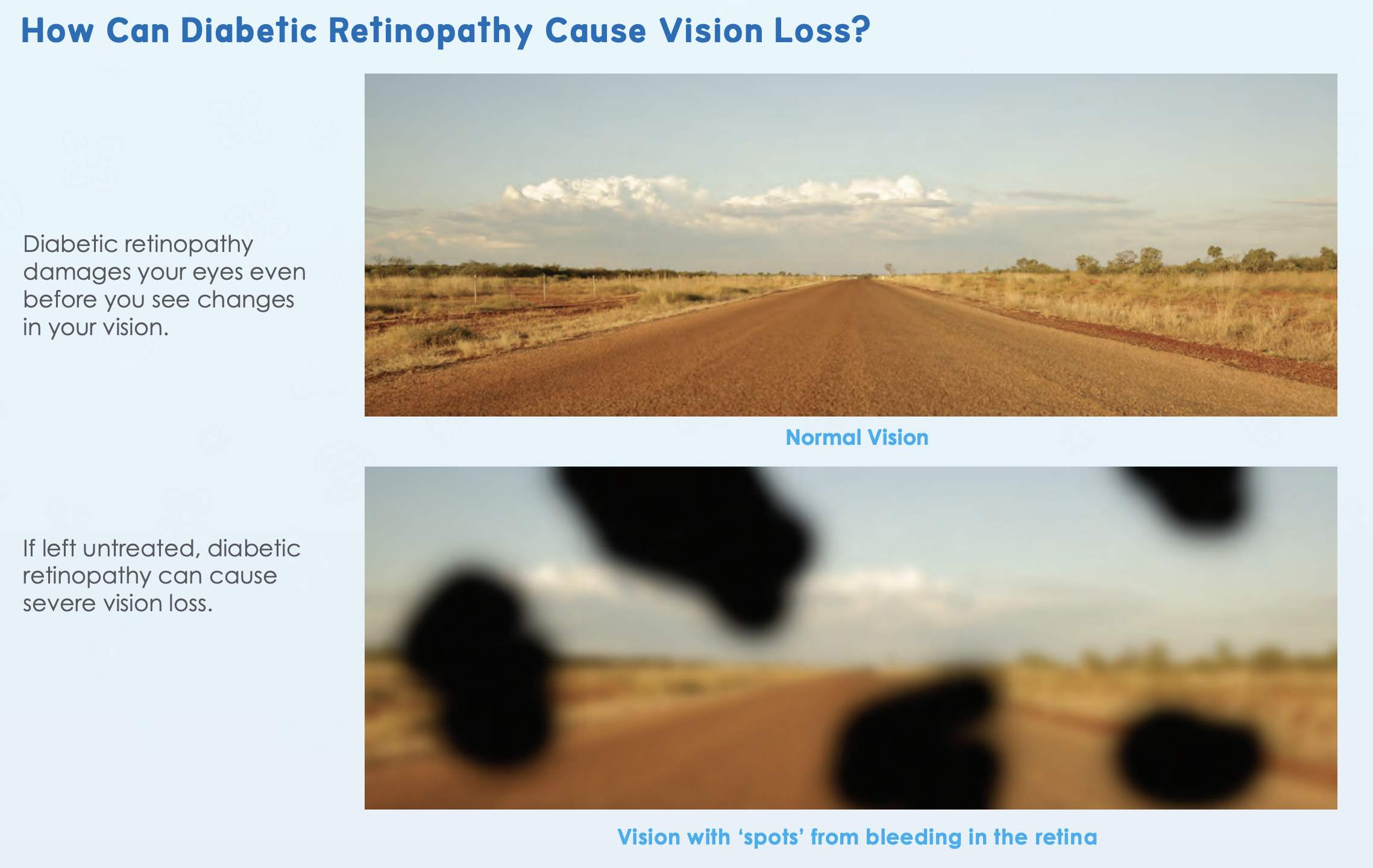
Image from 'Check Today, See Tomorrow' flipchart resource- How can diabetic retinopathy cause vision loss?
Emma quickly arranged an appointment for the patient at an ophthalmology practice in Orange, a large regional centre 2 hours' drive east of Condobolin. Emma collaborated with the Brien Holden Foundation optometrist and the Western NSW Eye Health Partnership to access this urgent appointment. The patient received several sessions of laser treatment.
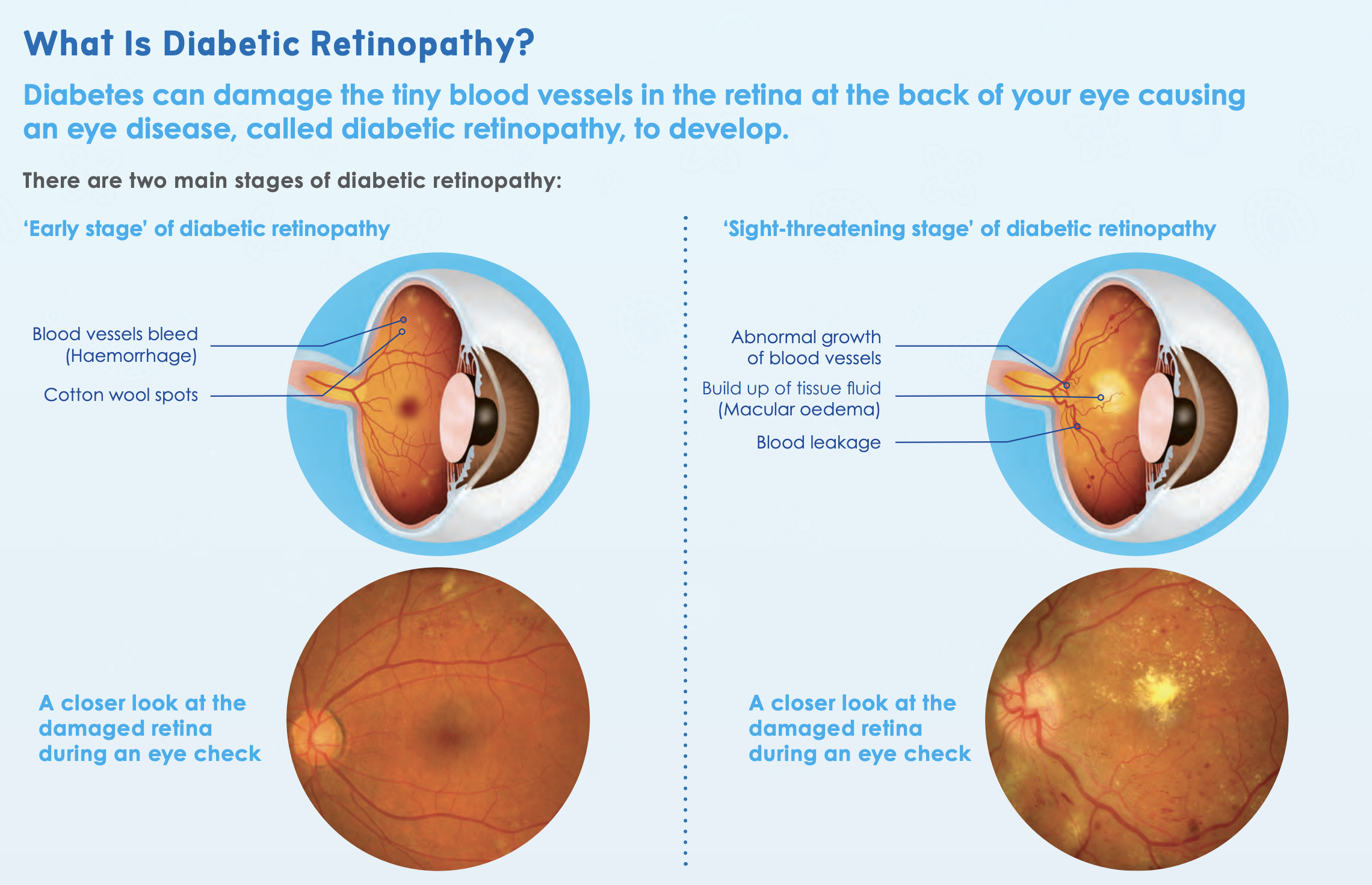
Image from 'Check Today, See Tomorrow' flipchart resource- What is diabetic retinopathy?
The need for a quick diagnosis and urgent referral of advanced diabetic retinopathy poses a challenge in an outer regional and remote settings with limited immediate access to eye care services. Emma developed her skills in triaging diabetic retinal photographs through the Australian Government ‘Provision of Eye Health Equipment and Training Project’. This project provides equipment including retinal cameras, primary health care training, mentoring and access to the Centre for Eye Health Retinal Photo Grading Service at Primary Health Care Services with a significant Aboriginal and Torres Strait Islander patient base. The tele-optometry consultation Emma accessed was funded by the NSW Rural Doctors via the Visiting Optometry Scheme (VOS). The Australian Government funded VOS payment for tele-optometry in NSW was a short term measure in the COVID-19 period to ensure continued access to outreach services where Medicare was not able to support this.
Emma's quick action helped saved this patient's sight, highlighting both the importance of primary health care involvement in diabetic eye screening and telehealth support for regional and remote health services.
Regional and remote AHPs trained and equipped to screen for urgent eye conditions and supported via tele-optometry can save patient sight.
If you have any questions relating to this ‘story’ please contact Jane Hager, Senior Project Officer - Western NSW Eye Health Partnership via email: jhager@nswrdn.com.au
This 'Share your Story' article was published 22 October 2020.